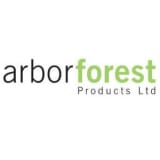This informal CPD article ‘The anatomy of a deck: understanding decking from the inside out‘ was provided by Arbor Forest Products, one of the largest independent timber importing businesses in the UK, providing outstanding service and distribution to merchants.
As the traditional decking season approaches, designers, landscapers and contractors are likely seeing an uptake in bookings as business owners and homeowners continue to see the benefits of decking to improve and increase their outdoor living space.
Not only can decking increase the value of a property, but it also offers a versatile solution for extending a living space into the outdoors. Available in a range of materials – from timber to composite – and colours, and with almost endless design possibilities, it’s clear that decking’s popularity is set to continue its impressive growth trajectory.
But with so much choice comes a series of considerations. Specifiers must account for factors like materials and quality, but it can be easy to overlook the importance of understanding a deck from the substructure to the surface.
The full picture
While expert installers will of course have a robust understanding of all the elements that make a deck, this is also beneficial to other professionals, including specifiers and contractors. Each part of the deck is vital to the overall structure, meaning that the correct – or incorrect – choice and installation of individual elements can make all the difference in whether a deck will stand the test of time or not. It therefore makes sense that all professionals involved in the design and installation of a deck have an understanding of what’s involved in creating the end result.
Timber or composite?
The first question to ask when it comes to understanding the anatomy of a deck is whether timber or composite boards are being used. While traditional softwood timber decking remains a popular choice, composite decking is seeing an unprecedented growth in popularity thanks to its offer of durability, minimal maintenance and sustainability credentials.
While the structures making up both timber and composite decking are largely the same, the decision on whether to use timber or composite decking boards will impact the materials used for the various components used beneath the surface of the deck.
Using complementary products throughout the deck is always recommended for best results. Timber is a cheaper material than composite so it can be tempting to use timber components even when building a composite deck, especially when budget restrictions are in place, but it’s important to note that these materials react differently. For example, timber will warp under various weather conditions while composite remains the same, and this contrast can compromise the integrity of the deck’s structure.
The substructure
There are several components comprising the substructure of a deck. Although unseen, these elements are vital to ensuring the overall quality. Framing is the first step in any decking project, and one of the most important too. As the foundation of the deck, the frame is vital in ensuring its strength and durability and therefore must be installed correctly. Always read the manufacturer’s installation instructions prior to starting the subframe as this will confirm the spacings of the joists required, and should provide guidance on the subframe layout.
Quality materials and preparation are key to building a deck frame that will stand the test of time. Remove any weeds in and around the space, and check the ground is level with a slight incline away from the property to ensure proper drainage. Once these steps have been taken, the foundation can be laid.
To do this, joists are attached to the side of the beams, before the beams are added to a ledger. Bolts, landscape screws and stainless steel decking screws are frequently used to secure the beams.
The surface
Once a secure foundation is in place, it’s time to move onto the deck’s surface – starting with the decking boards. Whether the deck is timber or composite, products like deck clips and hidden fasteners are increasingly popular to maximise aesthetic appeal, as they minimise the visibility of necessary fixing systems.
Composite decking is available in a vast range of colours which removes the need to paint or stain the deck’s surface to achieve the desired overall look. From natural wood colours and effects to modern shades of grey, there’s a composite decking board for any project.
When selecting a composite decking, it is important to fully understand the performance of the decking boards, especially in the tough weather conditions the UK experiences. A quality composite decking board should come with at least a 25-year warranty. The board should not fade or stain – regardless of the weather or spillages.
It’s also important to always check the profile of the board. A quality durable board which will keep up with the demands of family life and weather should always be a solid deck board. Hollow boards are not advised as their performance and warranties are significantly less than for quality solid composite decking boards. Homeowners should always request a capped / co-extruded board with a protective outer layer.
Finally, there are a number of ways to enhance the surface of a deck, for both form and function. For example, multi-level decks require the addition of steps, which can be custom built to fit the space’s size and shape requirements. Railings are another popular addition to decking, and for decks at a height above 600mm from the ground, railings at 1100mm height must be installed.
While railing posts are required, there’s no need to compromise on views and style thanks to a vast range of deck railing products available on the market from stainless steel to glass. Lighting is another way to improve a deck’s safety as well as its visual appeal, and this can be built into a new deck or even retrofitted into an existing space.
Decks can also be completed with the addition of built-in planters, benches and even outdoor kitchens to create a standout space for any project – the options and variety of design is limitless, making decking an ideal choice to add value to a property and improve outdoor living space.
We hope this article was helpful. For more information from Arbor Forest Products please visit their CPD Member Directory page. Alternatively, you can go to the CPD Industry Hubs for more articles, courses and events relevant to your Continuing Professional Development requirements.













